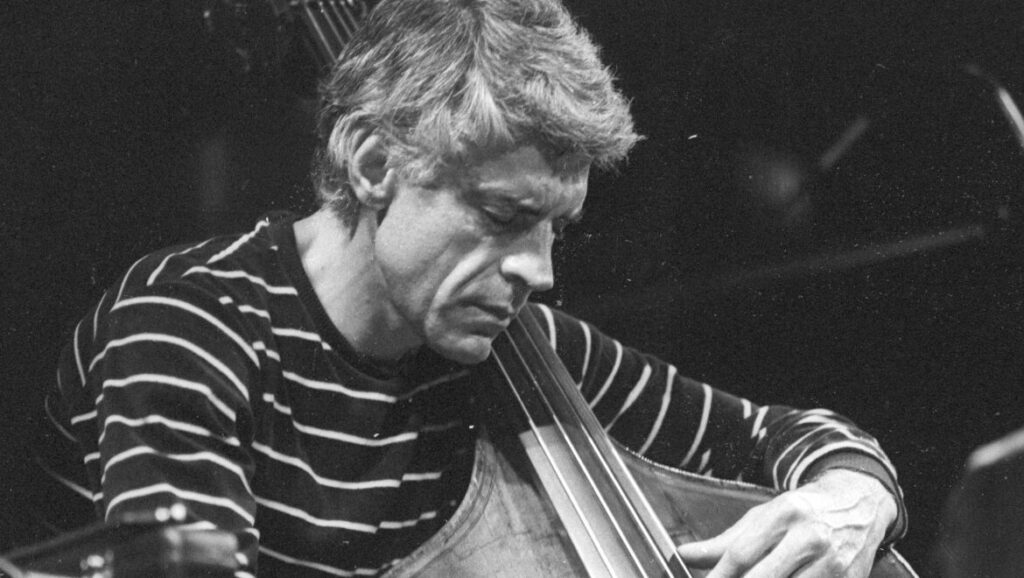The late 70s were all about progression, and a synergy between the production of more explorative gear and the experimental musicians using it made for expanded creative horizons. Guitarists were becoming increasingly more comfortable with complex rack-based effects in order to bring the sound of the studio to the stage. And so guitar-controlled synthesizers were the answer to the rhetorical question: why should keyboard players have all the fun?
BOSS’s parent company, Roland, recognised this early, and its first foray into the merging of guitars and synths came in 1977 with the GR-500. This powerhouse paired a full stand-mounted analogue synth with the GS-500 guitar controller to offer guitar players unprecedented sonic potential, and was the catalyst for placing Roland guitar synths in the hands of the likes of Jeff Beck, Jimmy Page, Andy Summers, Steve Hackett and more.
The GR-500 synth unit comprised five sections that could be blended, modulated and filtered to create a huge-sounding mix of electronic and guitar sounds. Synth-wise, it had the Polyensemble, Bass (which could be assigned to respond to: all six strings; the lowest three strings only; or the lowest two strings only) and Solo Melody modes, as well as a section for the GS-500’s magnetic pickup. It even had the ability to pass control voltages from the guitar to an external synth, with the audio looped back and combined with that of the GR-500.
Each of the GR-500’s three synthesis modes featured a three-stage envelope (Attack, Decay and Sustain), plus a VCF (Voltage Controlled Filter) whose cut-off frequency could be modulated by pitch, an LFO, an envelope or a foot-operated pedal.
Of course, with all of these options, the GS-500 controller was also bursting with features. So many, in fact, that it required a 24-pin serial cable to send all of its signals to the GR-500. First up are the pickups, with a standard magnetic humbucker joined by Roland’s divided pickup – the forebear to the current GK-5 model – to create a signal for each string. But in addition to this, the large pool in the neck pickup position housed a sustainer section, which vibrated the strings EBow-style for infinite sustain. The GS-500 was also fitted with no fewer than six volume controls, a master tone knob, and eight switches to collectively control most of the GR-500’s parameters remotely.
Debuting in 1977, Roland’s GR-500 synth and its accompanying GS-500 guitar controller opened the door to new sonic possibilities. Today, the bleeding edge of guitar-synth tech is embodied by the BOSS GM-800 (left), which packs exponentially more power into its sleek blue enclosure (Image credit: Olly Curtis/Future)
Fast forward to today, and Roland and BOSS have continued the development of their guitar synthesizers, arriving at the most recent: the BOSS GM-800. It’s a triumphant display of technological progression, packing a mesmerising array of classic and contemporary synth sounds into a compact floor-based unit. BOSS’s latest GK-5 divided pickup works in tandem with the GM-800 to deliver lightning-fast, accurate tracking. The GM-800 sound generation is based on the same ZEN-Core engine found in Roland’s flagship synth workstations, with over 1,200 internal voices ranging from sampled acoustic instruments to widescreen soundscapes. The GM-800 also benefits from an ever-growing range of creative options through Roland Cloud.
The advanced processing means that each of the GM-800’s 150 scenes can comprise up to four individual parts, each playing a different sound, plus a rhythm part. Alongside the sounds, there’s a dedicated MFX effects processor (with a choice of over 90 effects) and EQ for each part, two master effects processors that can be applied globally, plus a master EQ and compressor.
There’s connectivity, too, of course, with MIDI I/O, stereo audio outputs and the facility for two external footswitches or expression pedals. Thanks to the BOSS Tone Studio integration, taking a deep dive into the settings and sculpting huge, multi-timbral synth patches is a process that’s made reassuringly simple.
So, through a combination of cutting-edge pitch conversion and tracking, and powerful, rock-solid processing and effects, the GM-800 represents the progression of Roland/BOSS’s synth-guitar DNA in a relatively compact and incredibly creative package.
This month, Guitarist magazine includes a free supplement dedicated to 50 Years of BOSS. Click here to download it as a digital version or here for a ‘digital page-turner’ on Issu.
Guitarist magazine created this content as part of a paid partnership with BOSS. The contents of this article are entirely independent and solely reflect the editorial opinion of Guitarist.


